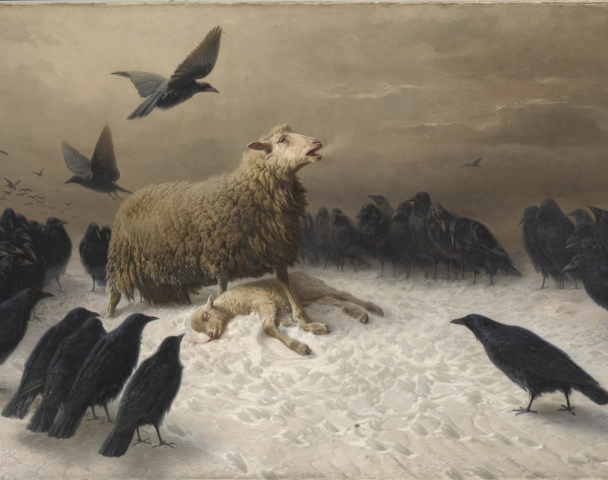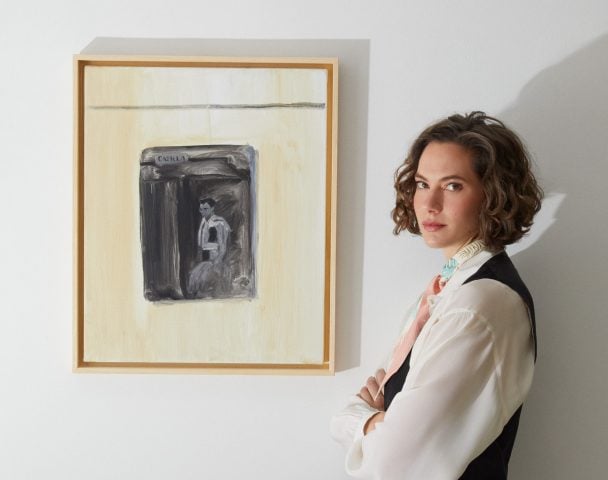Art & Exhibitions
Sonia Delaunay Was More Than a Painter. A New Show Celebrates Her Versatility Across Mediums
The pioneering artist and fashion designer steps out of her husband's shadow.
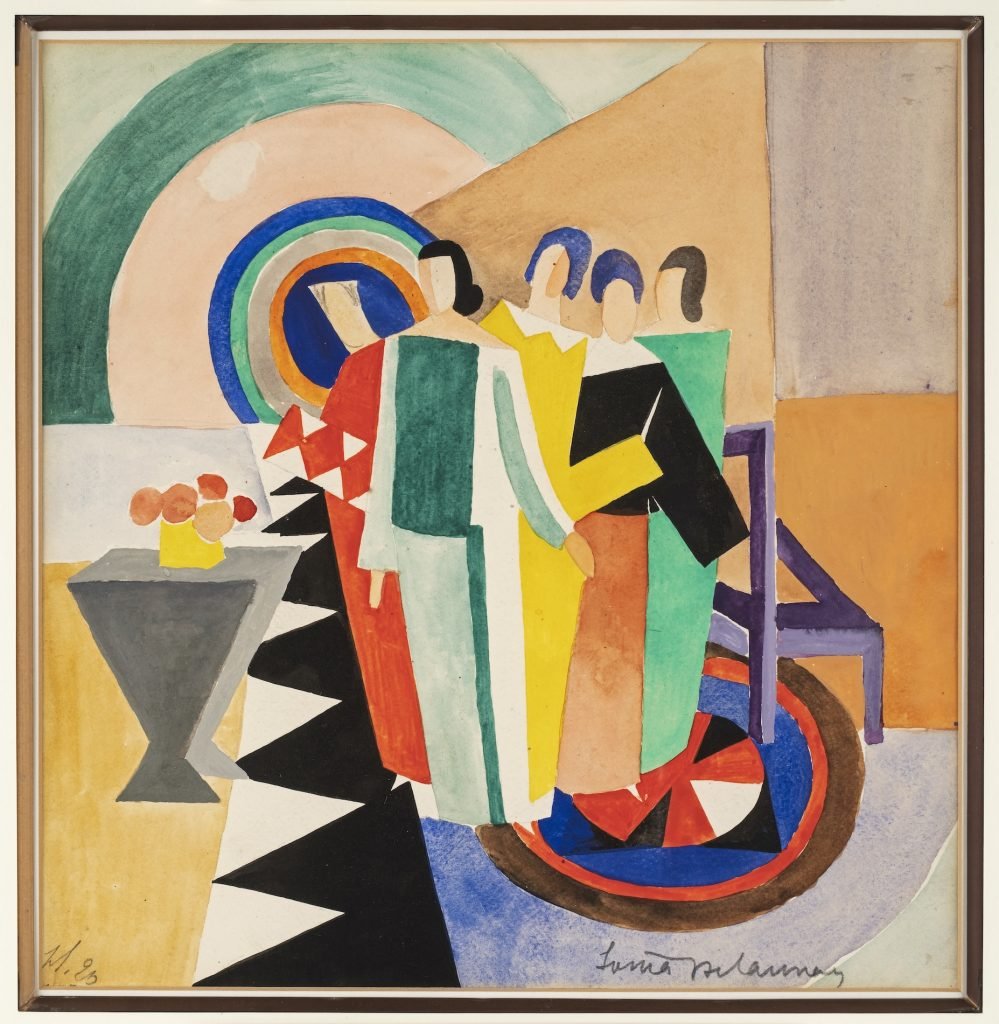
Fashion. Textiles. Interior design. Printmaking. Mosaics. Painting. Sonia Delaunay did it all. An artist and entrepreneur born in 1885, she defied the expectations of her era to forge a successful 70-year career fueled by her bold, colorful abstractions.
“For Sonia, there was no distinction between the fine and the decorative, and I think that opened up huge possibilities for her,” Laura Microulis, the research curator at New York’s Bard Graduate Center, told me. “This almost insatiable quest to create kind of propelled her throughout her whole life.”
Today best known as one half of a duo with her husband, Robert Delaunay, the artist stands firmly on her own in “Sonia Delaunay: Living Art,” her solo show on view through this weekend at Bard’s Upper West Side galleries.
“For me, Sonia’s work represents just kind of pure joy,” Microulis, who co-curated the exhibition with Waleria Dorogova, said.
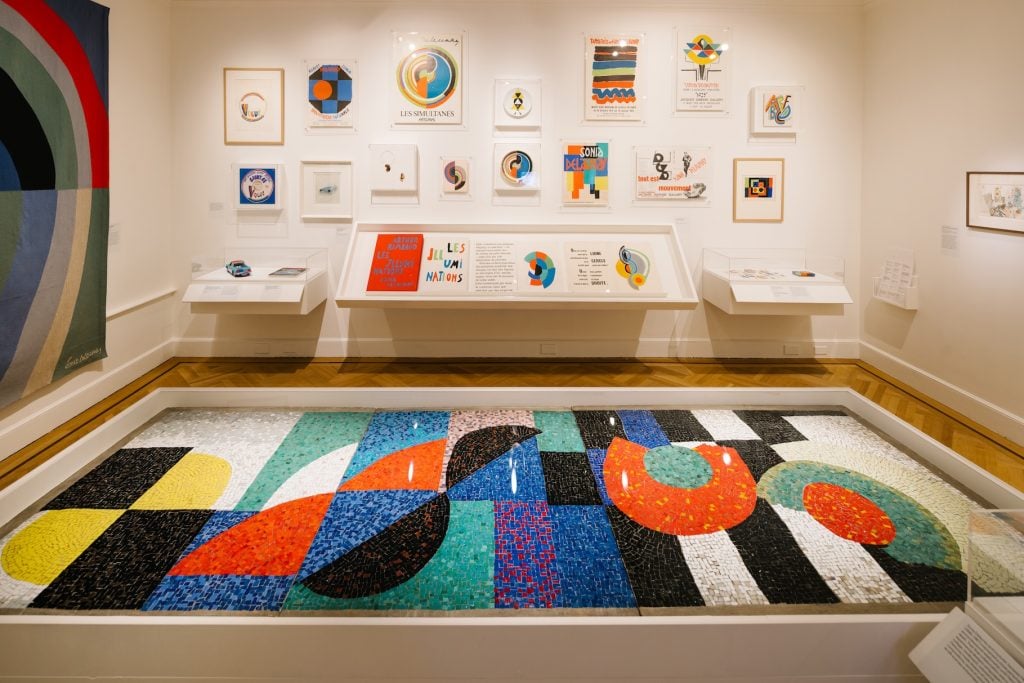
Sonia Delaunay, Mosaïque horizontale, executed by Maximilien Herzèle (1954), on view with works on paper by the artist in “Sonia Delaunay: Living Art” at the Bard Graduate Center Gallery. Photo by Da Ping Luo.
The Bard museum, with its focus on decorative arts and design, took a different approach to Delaunay’s work than previous exhibitions, focusing less on her virtuosic sense of color and form, and more on the diversity of her practice and breadth of her artistic output.
Born in the Russian empire, in what is present-day Ukraine, Delaunay left home at 18 to study art in Germany, before moving to Paris.
There, in 1907, she exhibited alongside the likes of Georges Braque, André Derain, and Pablo Picasso in her first art show. (She briefly married the dealer, Wilhelm Uhde, in a mutually beneficial arrangement that allowed her to rebuff her family’s desire that she move home to Russia, and helped disguise his homosexuality.)
In 1909, Delaunay met Robert. They were married by November 1910, and had a son, Charles, in January 1911.
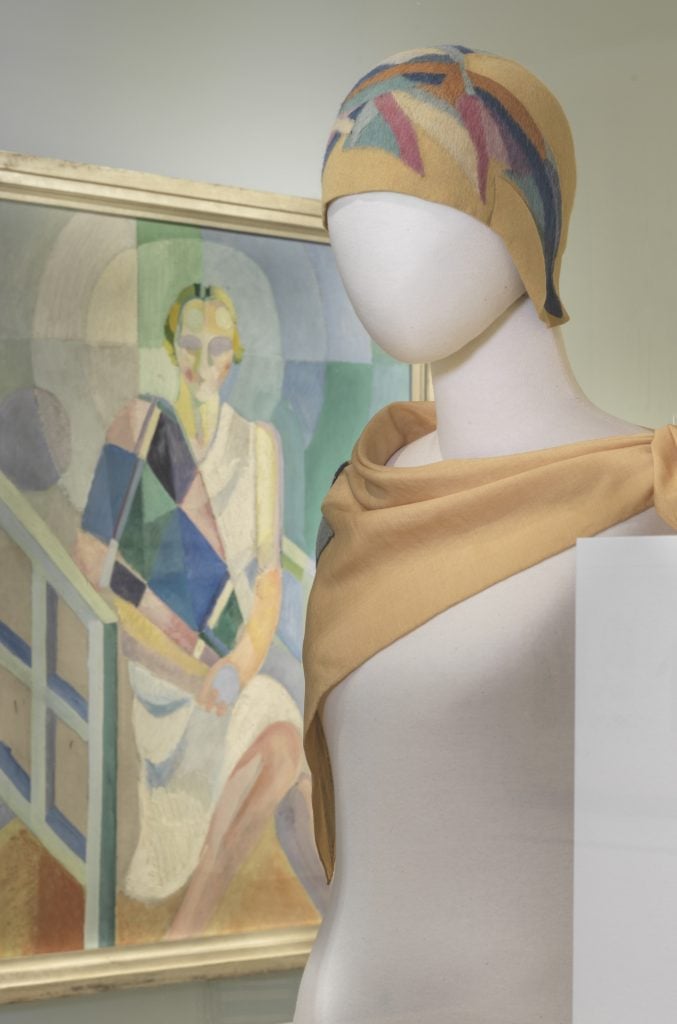
Installation view of “Sonia Delaunay: Living Art” on view at the Bard Graduate Center Gallery with Robert Delaunay’s painting Madame Heim (1926–27) and felted wool cloche and matching silk scarf by Sonia Delaunay. Photo ©Bruce M. White.
The birth inspired Delaunay’s first experiments with non-figurative art, when she made Charles a baby blanket with scraps of fabric, in the style of Ukrainian peasants. Struck by the almost Cubist effect of the color composition, she and Robert began experimenting with abstraction.
The blanket isn’t on view, but the show opens with Delaunay’s “Simultaneous dress” or “Robe simultanée,” a patchwork 1913 gown that Microulis described as “the star object of the exhibition,” on view in the U.S. for the first time ever.
“The dress is super special. Sonia made it to promote what she was doing in terms of her painting at the time,” she said. “It’s basically an abstract painting that she wears.”
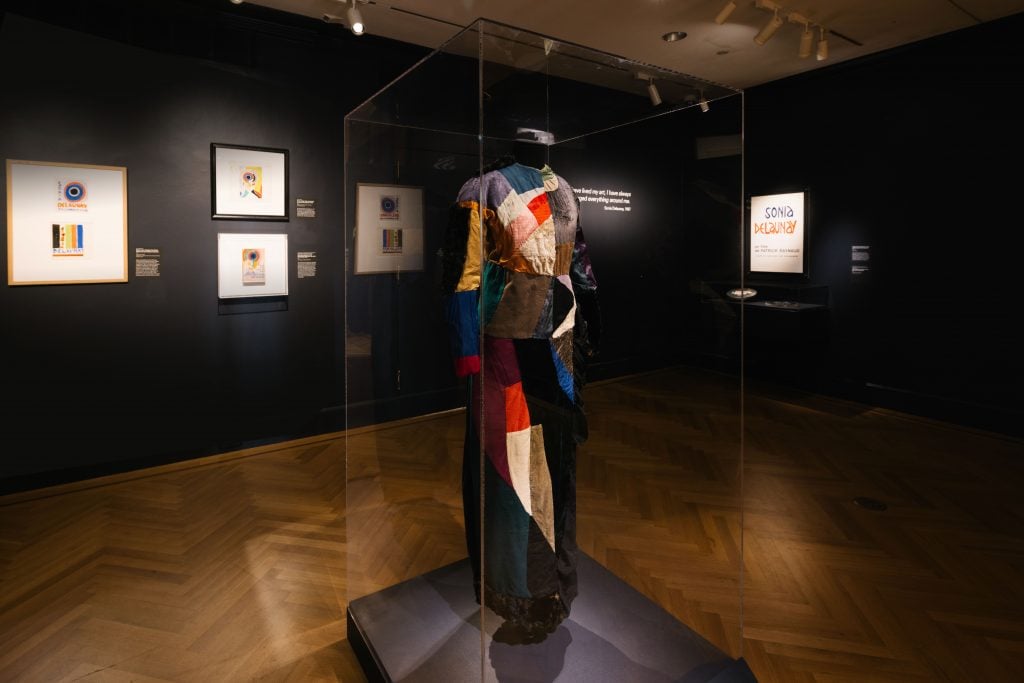
Sonia Delaunay, Robe simultanée (1913), on view with works on paper by the artist in “Sonia Delaunay: Living Art” at the Bard Graduate Center Gallery. Photo by Da Ping Luo.
The dress was designed to illustrate the couple’s new concept of Simultanism, or Simultané, which is based on the visual relationship colors have to one another viewed side by side. (The couple would trademark the term in 1925.)
“It’s really the idea that colors, when they’re surrounded by other colors, look different,” Microulis said. “Simultaneous contrasts actually produces an optical effect whereby the colors [seem to] vibrate. And there’s a rhythmic sort of dynamism that is produced as your eye goes across the canvas.”
This concept became the guiding force for Delaunay across mediums, applied to furniture, clothing, accessories, and bookmaking, and even to playing cards and automobiles. The Delaunays designed sets and costumes for ballets and she opened her first fashion and interior design business, Casa Sonia, in Madrid in 1918.
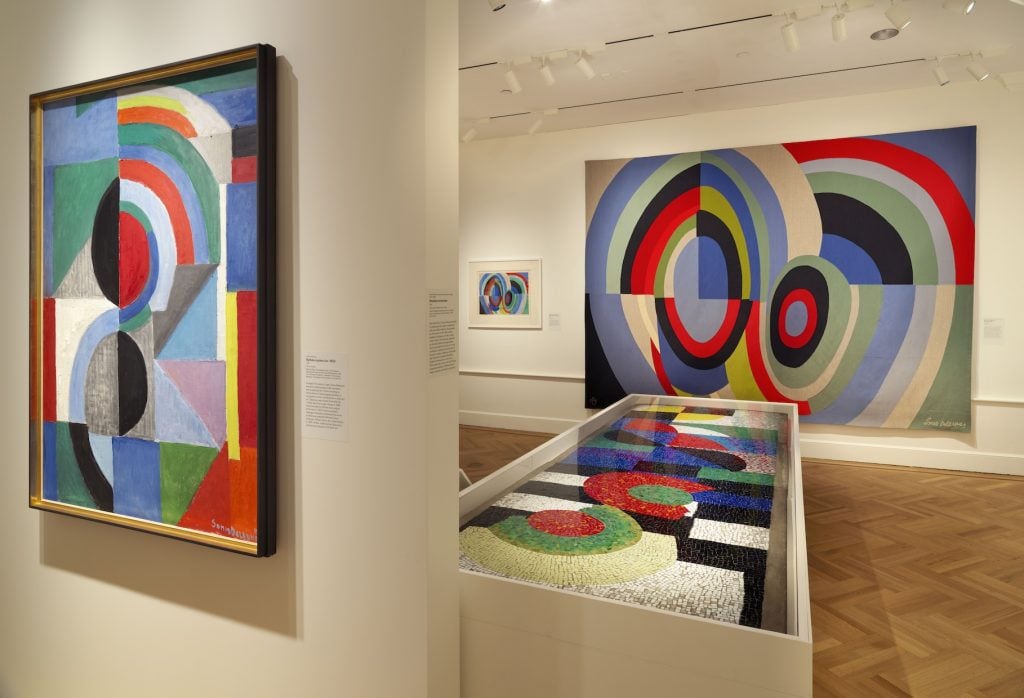
Installation view of “Sonia Delaunay: Living Art” on view at the Bard Graduate Center Gallery. Photo ©Bruce M. White.
Putting together the exhibition was something of a challenge. Many key examples of Delaunay’s work were recently on loan for her 2022 show at the Louisiana Museum of Modern Art outside Copenhagen, and are too delicate to be displayed regularly.
But that gave Bard the opportunity to delve deeper into her oeuvre, showcasing lesser-known aspects of Delaunay’s career, such as the tapestries she made for the French state in the mid-1970s, just a few years before her death.
The sheer range of projects on view in the exhibition is nothing short of remarkable, painting Delaunay as an ahead-of-her-time multi-hyphenate. (When I told Microulis I thought she would be an influencer if she alive today, she said I wasn’t the first to jump to that conclusion.)
“Sonia had these very elaborate photo shoots with prominent photographers where she would dress in her clothing. All of those images would be sent out to to various press outlets,” Microulis said. “She was like her own press office.”
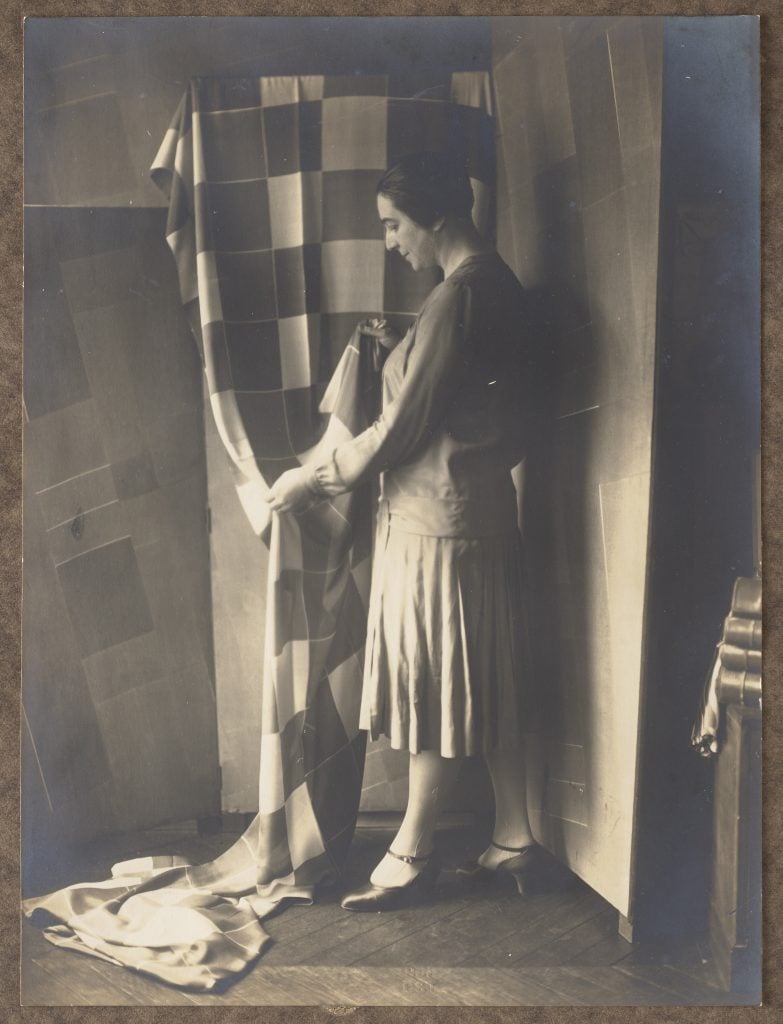
Sonia Delaunay in her studio at Boulevard Malesherbes (ca. 1925). Photo courtesy of the Bibliothèque nationale de France.
Robert died of cancer in 1941 at the age of 56, while Delaunay lived until 1979, age 94. She became the first living woman artist to have a solo show at the Louvre, in 1964, and remained remarkably productive even into her final years.
And Delaunay was mindful of her own legacy, compiling an exhaustive personal archive of letters, journals, and other materials documenting her remarkable life and many artistic accomplishments. A tireless self-promoter, Delaunay arranged to donate a large collection of her fabric samples and color cards—a selection of which are on view at Bard—to the Textile Arts Museum in Lyon, France.
“Sonia very deliberately wanted her textiles to become a part of the history of luxury silk production in Lyon,” Microulis said. “Given the strategic donations she made to French institutions later in her life, I think she knew on some level that her work and the work of her husband were going to be an important part of the history of art.”
“Sonia Delaunay: Living Art” is on view at the Bard Graduate Center Gallery, 18 West 86th Street, New York, New York, February 23–July 7, 2024.




